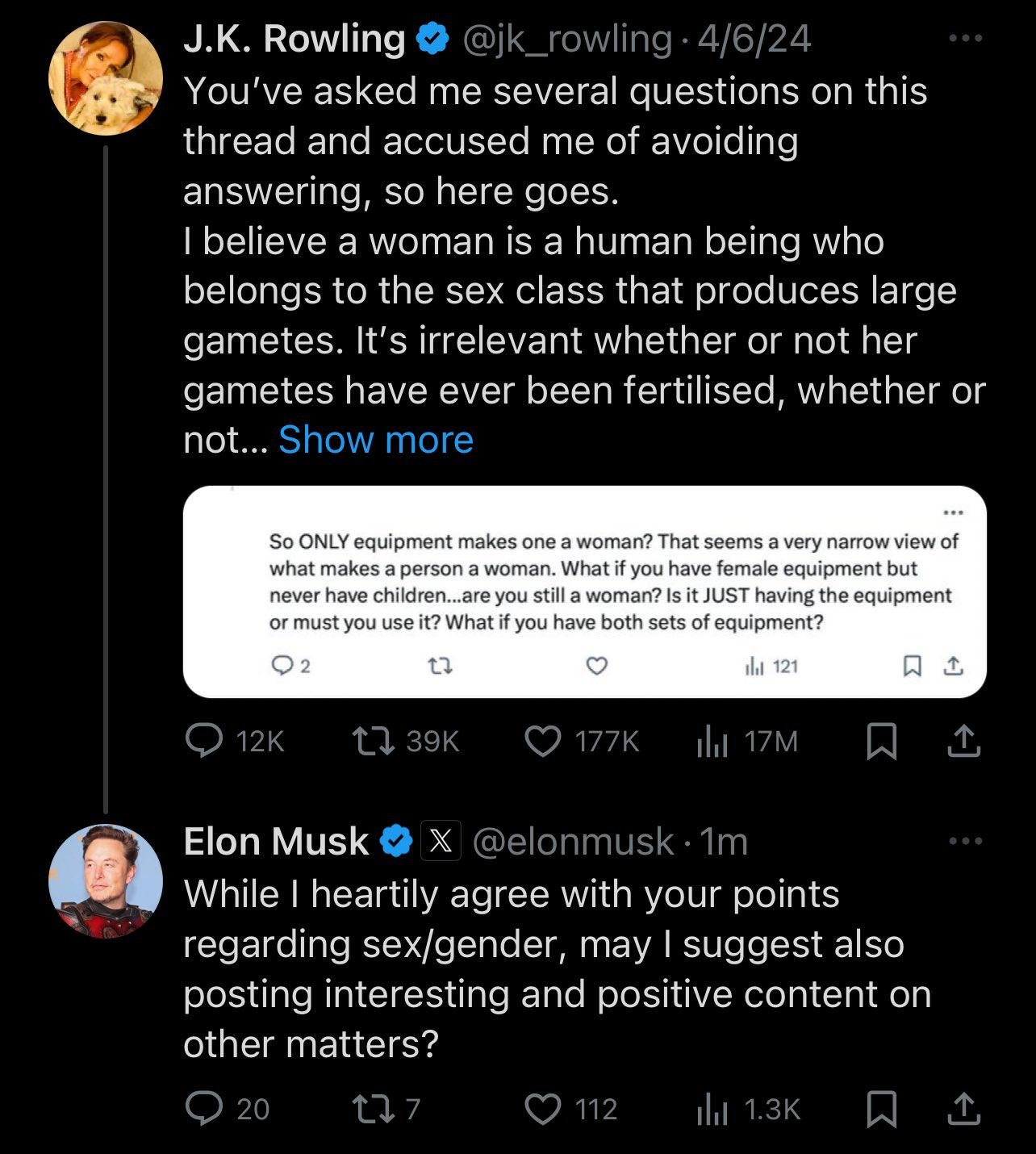this post was submitted on 05 May 2024
590 points (97.0% liked)
196
16845 readers
3050 users here now
Be sure to follow the rule before you head out.
Rule: You must post before you leave.
founded 2 years ago
MODERATORS
you are viewing a single comment's thread
view the rest of the comments
view the rest of the comments

Can you give an example? Not trying to be a bigot, just curious.
here's one example for you (click here) exploring igbo gender norms
here's a second report that's worth reading too (click here)
i don't have much knowledge about the other cultures suggested, others can provide info for those
Thank you for this article. Deeply interesting.
What, you're telling me that boywives were real all along!?
There’s entire branches of research on this, but I think one of the easiest ways to approach it for starting out is to think of the word “womanly.”
I would strike the word “traditionally” from that definition since we’re talking about a comparative and differential analysis and concentrate on the “qualities and characteristics” part. Although most people in the US today wouldn’t think of it this way, imagine the perception of a woman army officer commanding male troops in 1845. You can take the same approach when looking through history or across cultures. What roles, qualities, and characteristics are associated with “women” and how do they differ and evolve?
There’s some complexity when you get into the details - indigenous cultures change when they come into contact with, say, colonialism, and the people who studied them might themselves be observing through their own prejudices. History is replete with examples of British colonialists being unable to properly deal with things like the egalitarian democracies of the northern indigenous peoples or the matriarchal social structures. Picture the used car dealership where the salesman still insists on engaging with the man even though it’s the woman buying the car.
Semantics is the study of the meaning of words, and semiotics is the study of symbology. When we’re talking about these things, we’re talking about how the ideas and symbols associated with the idea-token “woman” differ.
The reason why this is important is that this is the crux of the transphobic argument. Their argument is cultural, not biological (although like I said, even their biology is sketchy).
I think a great study that includes cross cultural anthropological analysis of the role of women, as well as politics and economics, is David Graeber’s The Dawn of Everything.